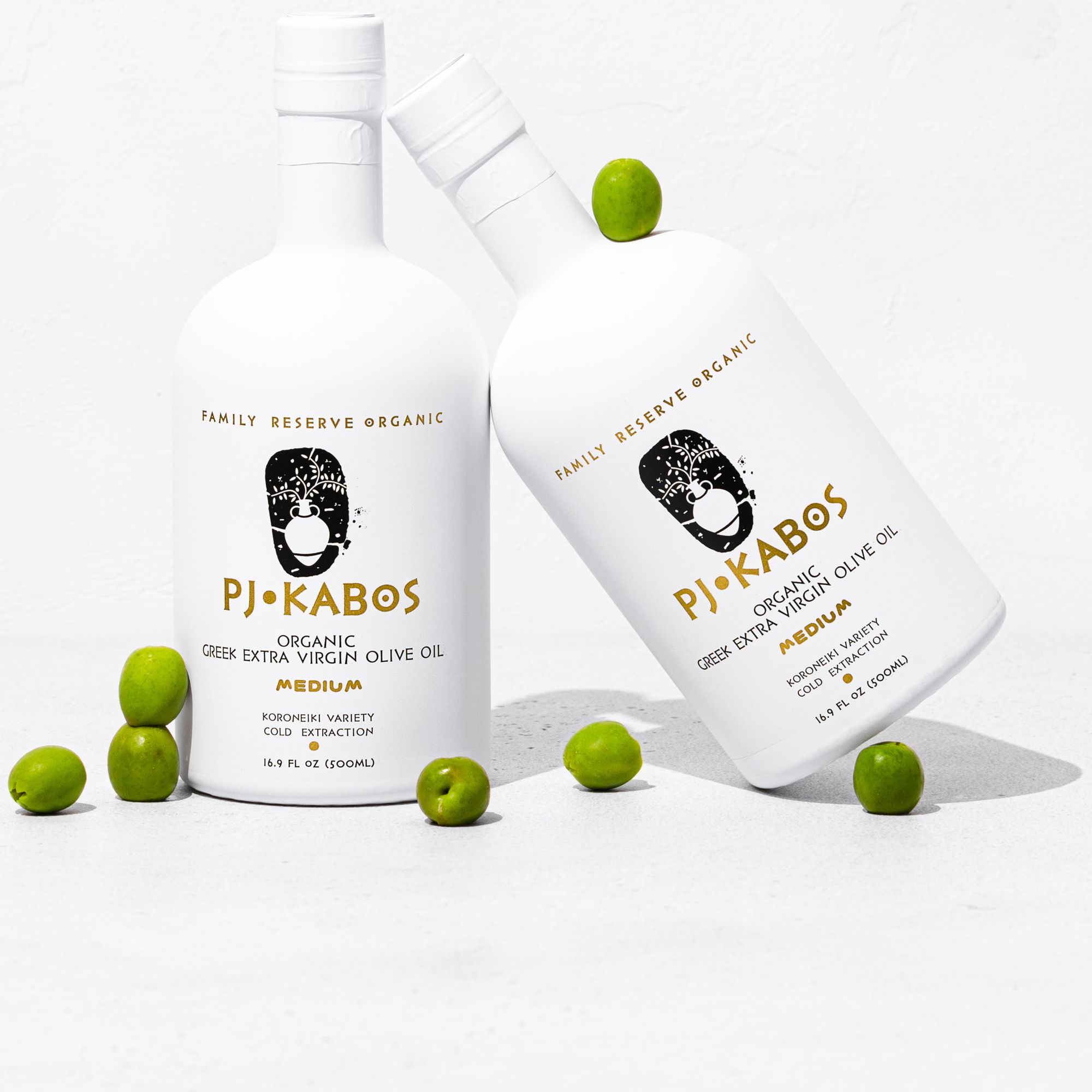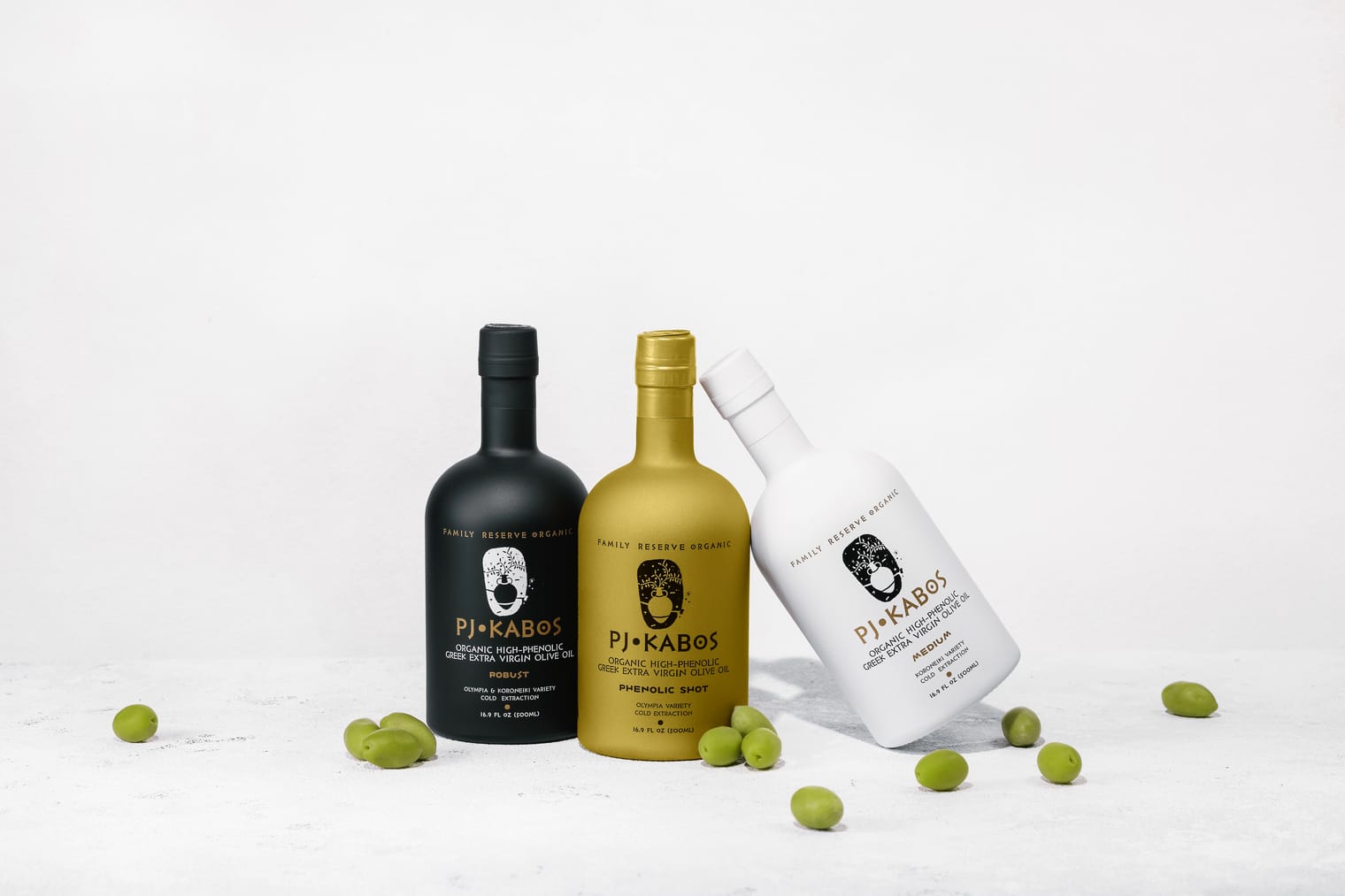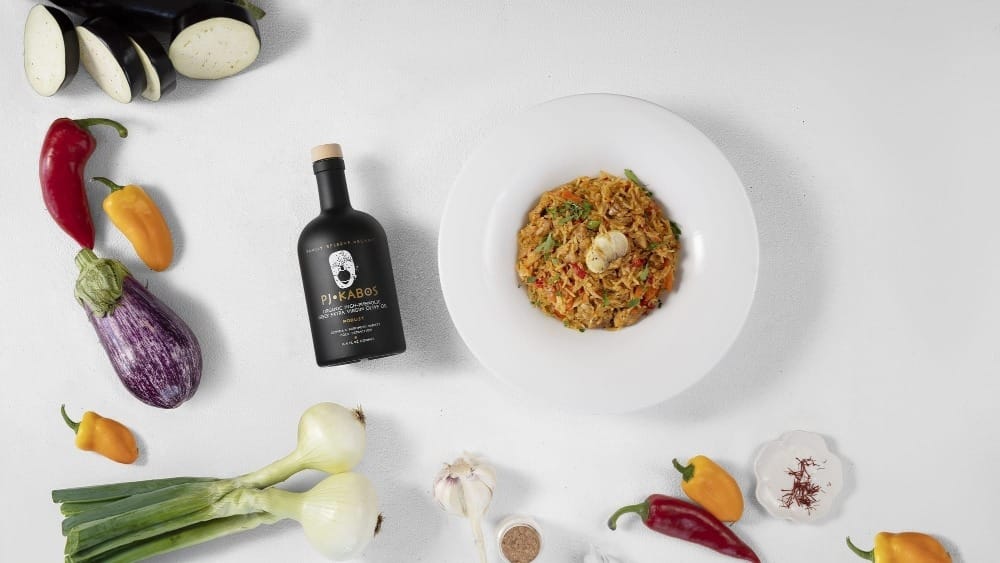Olive oil is a buzzed-about “superfood” today, but we aren’t the only ones singing its praises. In fact, ancient people in the Mediterranean basin had another designation they preferred: they believed olive trees were sent by the gods. The legend goes that when the city of Athens was founded, the goddess Athena created the olive tree so that they would choose her as their patron, rather than the god Poseidon.
Can you blame the ancient Greeks for believing these trees were godly? These trees produced a delicious bounty of fruit each year, which could be used for eating, lighting lamps, cosmetics, medicine, and more.
In Greece, they thanked the Greek gods for their olive cultivation. Aristaeus, the God of Olive Growth, was praised for protecting the olive groves. In Judaism, olives are believed to be one of the seven fruits that Israel was blessed with. (Read more about Israeli olive oil here.)
In fact, there is a mitzvah for bringing olives, as well as the other fruits, to the Holy Temple in Jerusalem. There’s also a special blessing to say when one eats these fruits.
While we may never know if olive trees were a gift from the gods, we do know quite a bit about their early days. Here’s a deep dive into the history of olive oil.
The Earliest Days: Domestication Of Olive Trees
According to a 2007 article by Paul Vossen of University of California Cooperative Extension, the precise origin of the olive tree is unclear. While we think of the olive as a product of Mediterranean countries, researchers speculate that the wild olive originated in Syria, or potentially sub-Saharan Africa.
Of course, the Mediterranean is where the olive tree thrived. Researchers believe that olives were first domesticated in the Mediterranean region approximately 6,000 - 8,000 years ago. According to Thought Co., olive trees might have been so attractive because of the oil – not just the fruit.
Earliest Evidence Of Olive Oil Discovered
In a dig from 2011-2013, scientists made a huge discovery: the earliest known remains of olive oil. In Ein Zippori, Israel, an expansive Early Chalcolithic site was discovered when widening a road, scientists found pottery shards that contain the remains of olive oil. After the poetry shards were found, scientists sent the vessels to the lab where they tested the organic remains that were absorbed by the clay.
According to Haaretz, “What species of olive cannot be known; archaeologists have sharply differing opinions about that, let alone when the olive became known and used in the Levant.”
As Dr. Ianir Milevski of the Israel Antiquities Authority, who was part of the dig, told Haaretz, the find proves that olive oil was being produced 8,000 years ago. In fact, the ancient extracts have a strong resemblance to modern-day olive oil.
Propagation of Olive Trees
Researchers believe that the spread of olive oil was likely happening at the same time as the vegetative propagation (reproducing a plant by cutting or grafting rather than seeds) of other plants, including wine grapes, figs, and date palms.
Olive trees are not easy to propagate by seed, as the juvenile phase is so long. It takes about 10-16 years for an olive tree to bear fruit. What’s more, the offspring also bear little resemblance to the mother tree.
As with today, the earliest agriculturalists likely selected for the trees that bore fruit early and produced ample yields.
What else were they likely looking for? Trees that grow in arid areas, on poor soils, and are easy to harvest would have all been attractive. From there, the trees made their journey to the west.
The Trade of Olive Trees
Soon enough, olive oil really was liquid gold, as it was once called by the famous Greek poet, Homer. As Vossen states, ancient documents found in Syria show that olive oil was five times more expensive than the price of wine. It was two and a half times more expensive than other seed oils used at the time.
Olive oil was an important export of Mycenaean Greece (c. 1450–1150 BCE) when they frequently traded with the Phoenicians and even parts of North Africa. Researchers believe that at this time, olives were placed in woven mats and squeezed to extract oil. This process continued – and was also used by the Egyptians – through the Hellenistic period.
Olive oil continued to gain importance after the Roman empire conquered Egypt, Greece, and Asia Minor. This time period brought more trade along the Mediterranean. With more trade came more cultivation of the olive tree.
As said by Pliny the Elder, Italy had "excellent olive oil at reasonable prices" by the 1st century AD. He went so far as to call Italian olive oil the “best in the Mediterranean.”
Ancient Applications of Olive Oil
While olive oil was used for food preparations, of course, it was also used in religious ceremonies, medicines, and more. Here are a few ancient examples of the use of olive oil.
Religious Ceremonies
- In Ancient Greece, olive oil was used in the religious ceremonies of the Minoans on the island of Crete. The Athenians also used olive oil in worship. When people died, olive oil was used to anoint their bodies and prepare them for burial.
- Olive oil also holds high status in Judaism. During the exodus from Egypt, the only oil the tribes were able to use to light the Menorah was olive oil. Even today, olive oil is the preferred oil to use while lighting the candles during Hanukkah. Olive oil was also used to anoint the ancient kings of Israel.
- The Christian Orthodox Church also uses olive oil to anoint its leaders, kings, and more. They believe in using extra virgin olive oil (EVOO) as only the finest olive oil should be offered to God.
- Catholics also use olive oil in ceremonies such as confirmations and consecrating ministers and bishops.
- Olive is considered a “blessed” fruit in Islam, with one of the religious texts even saying “Eat olive oil and use it on your hair and skin, for it comes from a blessed tree.” It is used in ruqya treatment, a traditional religious healing modality.
Medicine
- Hippocrates, the renowned ancient Greek physician, listed more than 60 uses for olive oil in medicine. These included skin conditions, wounds and burns, ear infections, and more. In fact, Hippocrates called olive oil “the great healer.”
- Olive oil was also applied to the bodies of Greek and Spartan athletes before they exercised at the gym or participated in games. In fact, winners at the Olympic games would receive a wreath of olive branches as their prize, which eventually became a symbol of peace.
Cosmetics
- Olive oil was used for skin and hair care by the ancient Egyptians, Romans, and Greeks. (Curious about olive oil in skincare? Read all about it here.)
Olive Oil Production: How It’s Made
By the 5th century AD, Romans and Greeks were using more sophisticated methods to produce olive oil. They invented different types of olive press including the trapetum, a large olive press that’s somewhat like a mortar and pestle.
According to Thought Co., “These machines were all similar and used levers and counterweights to increase the pressure on the baskets, to extract as much oil as possible. Traditional presses can generate up to 50 gallons (200 liters) of oil and 120 gal (450 li) of amurca [byproduct of olive production] from one ton of olives.”
Interestingly enough, the traditional ways of making olive oil have not changed much since the early days, even as the plants have made their way to the new world.
In the past, all olives were hand-harvested. Today, some producers still hand-pick their olives, as some terrain is more challenging for machines to navigate. More often, producers use a machine that shakes the trees so the olives fall onto a net or catch frame below.
This is a faster method – approximately four times faster – than hand-picking olives. As olive oil is best when the olives are pressed immediately after harvest, this allows producers to quickly move from the harvest to pressing phase.
Today, virgin olive oil and extra virgin olive oil (EVOO) are still cold extracted via mechanical methods.
While the technology is more sophisticated, the concept is the same: the oil is mechanically extracted from the olives. As the tempartures are carefully controlled during production, these olive oils remain packed with health benefits. That is why EVOO is the finest olive oil available for purchase.
While the production of EVOO and virgin olive oils have hardly changed, regular olive oil and light olive oil are made with a blend of virgin olive oil and refined olive oil. (Read more about the different types of olive oil here.)
To taste the oils of the ancients, always reach for a high-quality EVOO. Isn’t there something just divine about it?
Sources
https://www.chabad.org/library
https://www.chabad.org/parshah/article
https://www.researchgate.net/publication/242
https://www.haaretz.com/archaeology
https://www.explorecrete.com/nature
https://www.islamicfinder.org/news
https://www.ancient.eu/image/5645/
https://www.dw.com/en/olive-oil
Product placement
PJ KABOS 'Family Reserve Organic - Medium'
High Phenolic and 2022 Gold-Award Winner.
Declared as 'One of the World's Best Olive Oils'.
Click here to shop.





